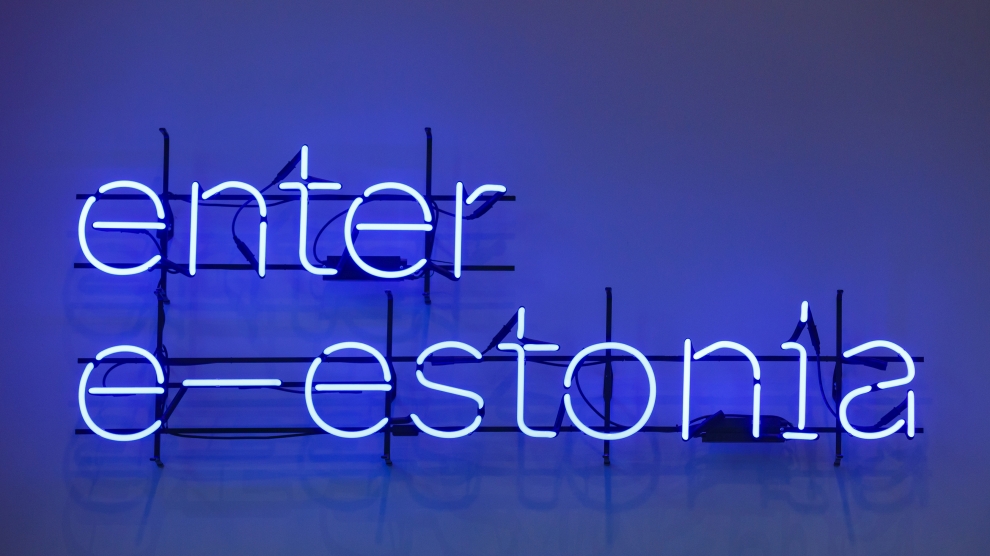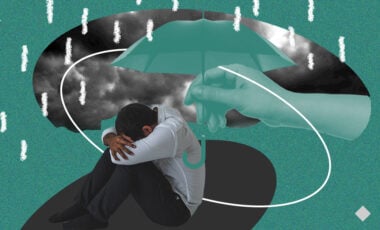Making doctor's appointment and voting from bed: digitalization illustrated by Estonia
While Ukraine is creating a "state in a smartphone," Estonia has already become a "state in a card." We explain how it works, and what lessons Ukrainians can learn from the experience of a European leader in digital transformation

Photo Depositphotos
Estonia is one of the smallest countries in the European Union, however, it's one of the EU leaders in terms of digitalization. The country, which was part of the Soviet Union a little over 30 years ago, is today an example of introducing modern technologies into government; 99% of public services are provided online. So how has the small Baltic country been able to become the engine of digital transformation, and what can come in handy for Ukraine?
"I don't remember the last time I signed a document by hand"
Yes, it's not fiction. Many Estonians have already forgotten what it's like to sign documents with their own hand and a pen on paper. The key to the Estonian citizen or resident interacting with the state is an ID card. It's a real identification document, which also contains a small chip. Visually, such a card resembles a combination of a driver's license and a bank card, and 99% of all people permanently residing on legal grounds in Estonia have it.
Along with the card, its holder is provided with PIN and PUK codes required for identification in online systems. To use the card, you must also have a card reader capable of working with the built-in chip or configure special Smart-ID or Mobil-ID services that allow you to log in via a smartphone without using the card directly.
With this document, an Estonian resident can get almost all the needed services online. With the card, you can make an appointment with a doctor at the online registry, file an application to the court, pay taxes, etc. The ID card is also used by non-governmental commercial institutions, for example, for authorizing in online banks or even for registering a savings account in a supermarket chain.
Liis Veski, an Estonian citizen and student at the University of Tartu, describes it this way: "There's nothing I can't do on the Internet. I still need to go to the Migration Service when I need to get a new passport or identity card, but this only happens once every few years. In my daily life, I can easily do everything on the Internet."
Besides, the ID-card holder can digitally sign any electronic document. A document signed in this way has the same legal power as an actual document with a handwritten signature, so Estonians can make any inquiry, request, or contract in a few minutes without leaving the workplace. "Honestly, I don't remember the last time I signed a document by hand because it's so easy and convenient to do online," says Liis.
But the most impressive thing may be the opportunity to use this card to vote in elections. In 2005, the e-voting system was presented for the first time in local elections, and in the 2019 European Parliament elections, 46.7% of votes were cast online. The online voting system is immune to hacker attacks, and since after voting you can check your vote, everyone remains sure that their vote is counted correctly.
"For many people, online voting is controversial, but I really like it. I never voted in person (at the polling station – ed.), because when I got the right to vote, the online solution already existed. Not only is it extremely simple so that everyone, regardless of technical competence, can do it without problems, everyone can also do it anytime or anywhere. So I easily voted late Sunday night from my bed while I was in Iceland," says Liis Veski, describing her online voting experience.
How to save time and 2% of GDP
All the solutions implemented in Estonia, and their strong prioritizing further digital infrastructure development, didn't appear because of someone's whim. The digital transformation was chosen to solve very specific problems and provided the basis for the country's economic development in recent years.
The first step towards a digital state was taken in 1994 when the parliament developed the country's IT development strategy and secured funding for the industry at 1% of the country's GDP. The state also identified computer skills training as one of the school's priorities to educate industry professionals and make the use of digital services familiar and understandable to every citizen. The country's first electronic banking system appeared in 1996, and since 2000, government meetings and other procedures have also been moved online.
They made all these decisions to save resources: after the Soviet Union collapsed, the country simply didn't have enough funds to create an effective bureaucratic system like those operating in Western Europe. Also, Estonia has a low population density if we compare their 29.8 people per square kilometer to 75 people per square kilometer in Ukraine or 232 people per square kilometer in Germany. To ensure access to public services for all country residents, even in the most remote towns and villages, it was more profitable for the state to invest in the IT infrastructure development than in the development of a network of government agencies.
"The government has realized all the advantages, and that parties coming to power will insist on further digitalization; it's become an unwritten rule. As in other countries, they weren't naturally like-minded at the political level, but they realized that digital transformation could pull through the country," says Florian Marcus, e-Estonia Briefing Center's Digital Transformation Advisor.
And it worked: the government digitalization allowed to reduce the average time of the Estonian government meetings from 4-5 hours to 30 minutes. Introducing digital signatures saves a lot of time for productive activities, which is estimated to save up to 2% of GDP annually. The electronic income tax return takes about 3 minutes, and 96% of the country's residents register their income online. Digitalization of health care allows doctors to always have information about the patient's health and write up to 99% of prescriptions online.
Innovations that never stop
However, digital transformation is an ongoing process that constantly requires finding and implementing alternative solutions. Florian Marcus gives the following example:
"For instance, the Ministry of Social Affairs has decided that it wants to move the registration of newborns online. Splendid news: you're turning the offline process into an online process where parents have to fill out all the details and apply to the proper authorities. Done, right? No. It's where the hardest part begins: constant innovation, as your citizens will demand better and better services. Thus, the next step may be to automate the registration process, make the doctor responsible, not the parents, and create a nationwide data exchange system (such as X-Road in Estonia or Trembita in Ukraine)."
Let's say the state manages everything. Great, isn't it? Everything is ready, you can be satisfied with the result. But no. Florian Marcus explains why:
"Then comes the idea of proactive services: how about everything being processed automatically, and how about even getting a notification from the government like, 'You have the right to child benefit, you don't have to apply, it's already done automatically, we just need your bank account details.' And so on, and so on. Innovation never stops, as our understanding of service quality, design, and structure of solutions is constantly improving, while the expectations of the population are growing."
Thanks to such a purpose-built movement towards digital solutions, Estonia has become one of the most digitalized countries in the world. Today, digital transformation is an important part of Estonia's international image: a small country on the Baltic Sea coast is a base for an IT agency of the entire European Union, as well as NATO's Joint Center for Advanced Cyber Defense Technology.
Why can Ukraine learn from Estonians?
Voting online, 3 minutes for an electronic declaration, all the documents in the phone sounds like fiction, doesn't it? But it's our future, and in some places — the present. Digital transformation and creating a "state in a smartphone" have been identified as a priority for Ukraine; we've even set a relevant ministry up for this purpose. This brings first results: the "Diia" application is actively used to pay fines, register for vaccination, and so on. And recently, Ukraine became the first country in the world where e-passports were equated to real paper documents. However, we still have something to learn from the leading countries in digitalization, and here are Estonia's top five lessons for Ukraine:
- One of the key components of Estonia's success has been the government's clear priority of digitalization, as well as the stable financing of digitalization. As the Minister of Digital Transformation of Ukraine Mykhailo Fedorov told us in an interview, many projects of the Ministry are currently funded by donor money.
- Support for digital projects should take place at all levels, from school education to online voting.
- The constancy of changes and innovations. Innovation cannot be stopped; once a solution has been implemented, the world has moved on, and new demand and space have emerged to improve existing services. Therefore, digitization is an ongoing process that can never be completed.
- Sharing experience. Why step on the same rake someone might've already stepped on and now knows how to avoid it? Today, Estonia is one of Ukraine's most consistent allies on the world stage and in the issue of reforms in our country, so we can exchange experiences between our states with no problems. By the way, Estonians stress that they also have something to learn from Ukraine: according to Estonian Ambassador to Ukraine Kaimo Kuusk, Ukraine's advantage is that our main digitalization tool is a smartphone. Ukraine is building a "state in a smartphone," while Estonian digitalization is based on personal computers. Nowadays, not everyone has a PC, but almost everyone owns a smartphone which is a fundamentally different platform for digitizing government processes and services. Mutual exchange of experience is something that will lead to generating new ideas and solutions in the long run.
- For digital solutions to become the basis for state development, it's necessary to make them the basis for the state functioning at all levels. Florian Marcus, a digital transformation expert, says the process takes time, but the benefits are worth it: "Politicians around the world believe they need to achieve results in a year or two. But everyone, including the media and voters, must understand that digital transformation takes time. The percentage of using the new online service won't increase from 0 to 100% magically in one year. But if you've designed your services well and solved real problems for the population, success will come."






















































